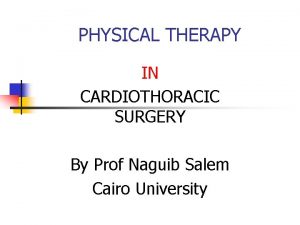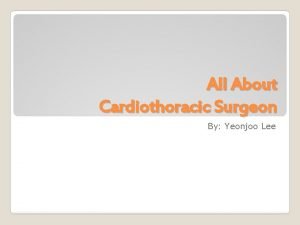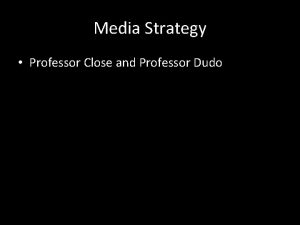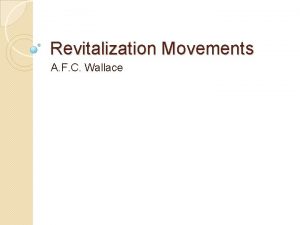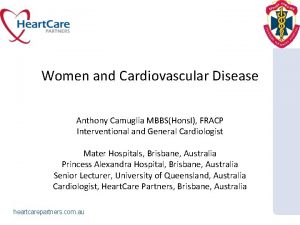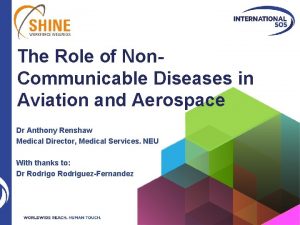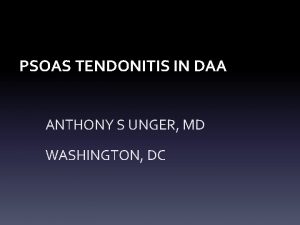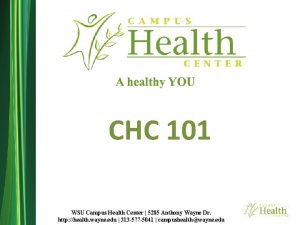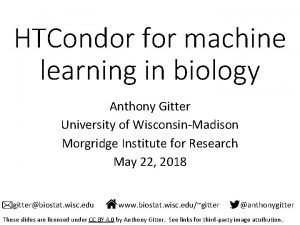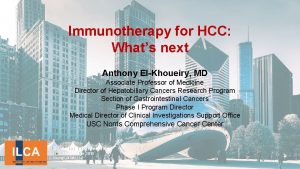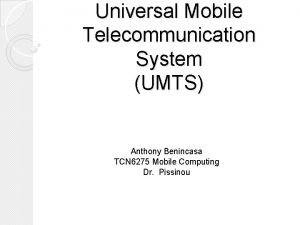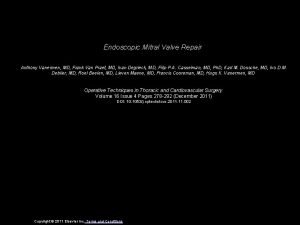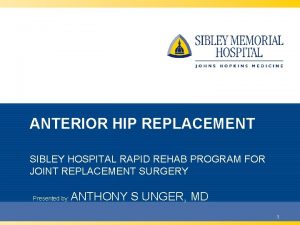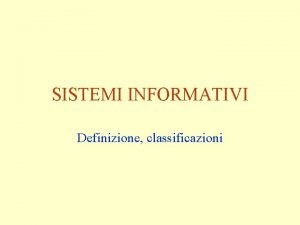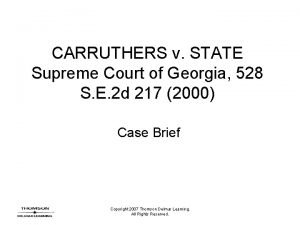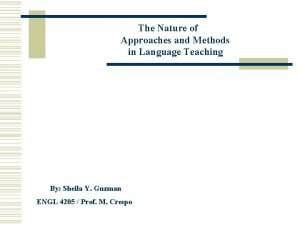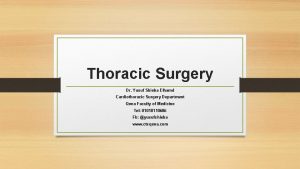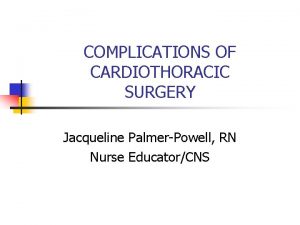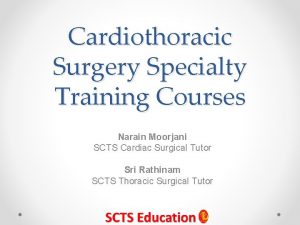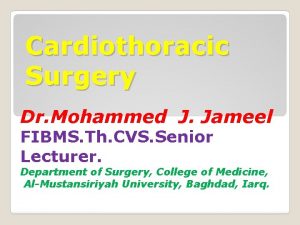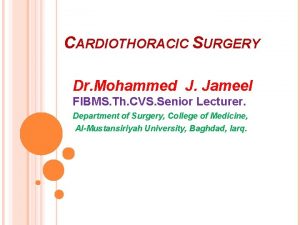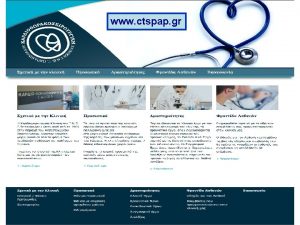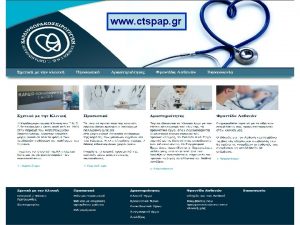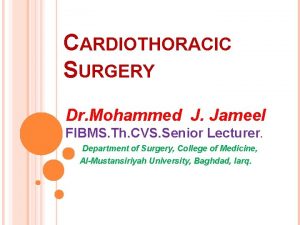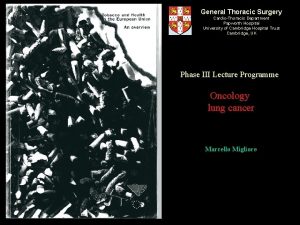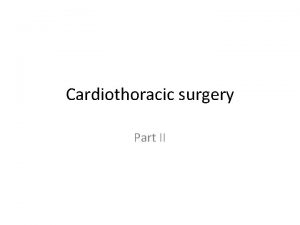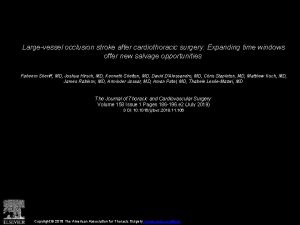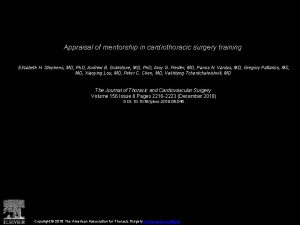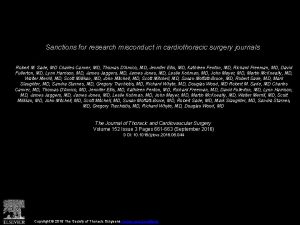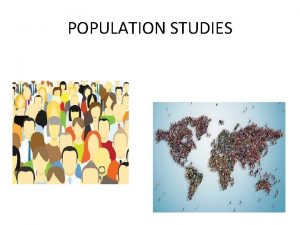Population Studies in Cardiothoracic Surgery in SA Anthony































- Slides: 31

Population Studies in Cardiothoracic Surgery in SA. Anthony Linegar MBCh. B. , FC(Cardio)SA. , Ph. D. Registrars’ Symposium Bloemfontein, June 2011. Faculty of Health Sciences Dept. Cardiothoracic Surgery University Free State

What is population health? . . . Refers to health status and health status inequities of populations and subgroups over time. Populations not individuals are the focus of action. Health outcomes -Measurement Rapidly evolving, multidisciplinary - Analysis (Dependant variable) Health sciencedeterminants that includes: -Patterns (in-dependant variable) Policies & Interventions Kindig D, Stoddart G. Am J Public Health. 2003 Mar; 93(3): 380 -3. Department of Population Health Sciences, University of Wisconsin-Madison School of Medicine

Why population studies / health service research? Establishes the facts (need, population, specialty) Positions the specialty within historical and current health care context

Why population studies / health service research? Illuminates weaknesses and strengths in the system Strategic planning in health care delivery and in individual career planning. How to translate research evidence into health care policy.

Health service research looks at effectiveness of health care. • Depends on the specific research question, • Method to be used: Observational (cohort, case-control, cross section, ) Experimental trials (randomised, non-randomised) • Relationship association and causative

Cohort study – follow up study • Observational • Not randomised • Identify a group who all share specific characteristics (alcohol consumption > 7 units per day) but healthy subjects • Follow for pre-selected outcome (cirrhosis) • Compare to population outside the cohort (control)

Case control • Observational • Not randomised • Select patients with a disease (lung ca) as the starting point • Select patients without the disease • Then measure exposures that might have a causal relationship (smoking) • Selection is prone to bias • Not able to establish a cause: effect but establishes an associative relationship

Cross section study • Assess the whole of a population • Disease and exposure are measured simultaneously in a population • Snap shot of disease prevalence and characteristics at one point in time. • Cause and effect are not certain as it may not be clear which came first as they are not chronologically studied

Randomisation • Starting point is one group split into 2 and therefore supposed to be as similar as possible • Split created by random process • Blinded • Double blinded • Therapeutic intervention applied to one group and comparisons made on outcomes of the two groups

Terminology • Epidemiology investigates distribution and determinants of disease • Health economics studies the financing of health care systems, quantifies the value of service provided, models decision making, attempts to influence the application of available resources. • Operational research

What measures do we use? • Crude incidence • Incidence = new cases per year / population x 100, 000 (time based definition) • ASIR • Standardisation – adjustment to remove effect of differences in a composite population This minimises erroneous comparisons. • Mortality rates crude = deaths per year/ population X 100, 000

Measures continued • Prevalence is not expressed per unit time = total cases at one point in time / population this is not a rate. • Clinical activity • Performance gap

Why population studies / health service research? Informs about: Clinical governance Burden of disease in community burden of disease service delivery Clinical activity within the burden of disease performance gap Research activity Linegar AG, 2008

A word on literature reviews - sources • MEDLINE via search engine PUBMED; 16 million citations since 1950 • OVID • EMBASE • CINAHL • Cochrane Library for clinical trials and systematic reviews. • African database (Africa-Wide: Ni. Pad) • SA non-reviewed journals

A word on literature reviews • Simple review • Bias; selection; exclusion; incomplete; sample size inadequate; lacks relevance; needs a great deal of explanation. • Value determined by the research question and the aim of the literature review.

A word on literature review • Systematic review • Starts with a predetermined aim and a clear and reproducible method, limitations are noted • Duplication by another researcher should reveal the same results – reproducible • Analysis of results requires meta-analysis

Study example in Rheumatic HD, Congenital HD, Thoracic surgery. 1. 2. 3. 4. Research question Aim of the study Objectives of the study Method

Example 1. Research question based on a hypothesis - the performance gap in TSY in CSA 2. Aim - to design a model 3. Objectives - Qt burden of disease - Qt clinical activity - Qt performance gap 4. Method - define the population - define the time period of the study - quantitative burden of disease study - Mixed methods

Health study in CSA • Mixed methods study – Performance gap in TS • Aim to create a model for the development of thoracic surgery • 2004 -2006 • Population 5. 2 million (HDI 121 st ) • 86% dependant on state health care provision • One department CTS (Bloemfontein) - 3 consultants, 4 registrars - 8 bed ICU and 22 ward beds

Methodology Burden of disease in community Clinical activity within the burden of disease Research activity Demographics CIR, ASIR Disease specific Mortality Data Stats SA, HST, MRC National Cancer Registry Publications (large series over finite time period) Departmental statistics Regional and tertiary hospitals Private CT Surgeons statistics Private medical aids ICD 10 codes Operation codes Other disciplines (Gen Surg) No. of surgeons (WTE) Systematic review all publications

The next step - implementation

The ATLAS Project: Premise for analysis. Qt Size of population and Burden of Disease / 100, 000 Incidence ~Prevalence ~ Mortality Resectability / Operability 10 – 20% Calculate required number of lung resections

Atlas project: results The top ten causes of cancer mortality in SA (persons) (Bradshaw et al. , 2003). Rank Cause of death Number of deaths % of cancer deaths 2 Cancer of Lung Trachea Bronchus Cancer of Oesophagus 3 Cervix cancer 3424 8. 2% 4 Breast cancer 3062 7. 3% 5 Liver cancer 2692 6. 5% 6 Colo-rectal cancer 2446 5. 9% 7 Prostate cancer 2411 5. 8% 8 Stomach cancer 2365 5. 7% 9 Pancreas cancer 1530 3. 7% 10 Mouth and Oro-pharynx cancer 1464 3. 5% All Cancer deaths 41691 100% 1 7173 17. 2 % 5803 13. 9%

Annual SA mortality: MRC vs Stats SA 700000 600000 34% Deaths 500000 400000 300000 200000 100000 0 1997 Stats SA 316507 BOD Unit 1998 365053 1999 380982 2000 414530 556585 2001 453404 2002 499925 2003 553718 2004 572350 2005 591213 Years Stats SA 2005.

Age Standardised death rates in SA. Cause specific mortality rates in SA and FS 2000 (Bradshaw et al. , 2003). Cause of death Age std death rate / 100 000 population SA Number of deaths SA (pop = 45 m) Number of deaths FS (pop = 2. 9 m) Estimated number of deaths for Central SA (pop = 4. 6 m)* HIV/AIDS 349. 9 165 859 11796 16130 TB 83. 5 29 803 2422 3849 Homicide 72. 5 32 485 1327 3342 LRTI 64. 8 22 097 2249 2987 COPD 49. 3 12 473 737 2272 43 18 446 811 1982 Lung cancer 26. 4 7173 369 1217 Oesophagus cancer 20. 9 5803 258 963 Road traffic accident

The ATLAS Project: Burden of disease based on ASDR. 26. 4 per 100, 000 in 48 m – 50 m population 12672 – 13200 deaths per annum Actual recorded deaths 2008 = 7131 713 - 1320 operations/ annum (10% resect) 1426 – 2640 operations/ annum (20% resect)

Clinical activity: lung resections Table 5. 3 Operations performed during 2006 at teaching hospitals in SA. A B C D E F G Total operations 268 463 1186 190 413 dna 210 Pneumonectomy (all pathologies) 7 11 19 8 21 dna 15 Pneumonectomy (lung cancer) Lobectomy (all pathologies) Lobectomy (lung cancer) 0 nk 4 0 nda dna 0 16 26 69 15 23 dna 11 7 nk 10 3 dna 0 Bullectomy Pleurectomy Lung reduction 1 2 0 27 27 0 4 11 0 5 2 0 14 0 0 dna dna 0 0 0 Open drain empyema Decortication Fenestration (Eloesser) Thoraco-myoplasty 5 2 0 1 0 55 0 0 27 17 0 0 5 24 0 2 8 6 7 4 dna dna 0 23 2 1 Oesophageal stent Oesophagectomy Benign oesophageal 29 3 0 15 1 0 50 14 0 0 3 0 0 2 0 dna dna 10 2 0 Mediastinoscopy Mediastinal mass 14 4 15 3 30 0 19 2 29 9 dna 6 0

Private sector lung resections 2005 SA 2006 SA All Drs CTS Admissions 1209 281 1357 328 Admissions per 100, 000 30 9 42 10 Lung resections 25 25 23 21 Scale up Medscheme and Discovery data to represent the whole private population = 38 -45 cases per annum

The performance gap Burden = 713 – 1320 operations required per annum in state and private in SA Operations for lung cancer done annually = 20 – 30 in 7 University Hospitals = 45 resections in private Total resections = 65 – 75 per annum Performance gap for SA as a whole 1 : 10 to 1 : 20

What does this mean? Clinical service provision 90% to 95% of expected resections are not done As a complete resection provides the only chance of potential cure for these patients Most potentially curable patients are not adequately treated

Task 1. Design a study plan in your region to explore the following - Rheumatic HD - Congenital HD - Thoracic surgery with respect to burden of disease; service provision; identify possible solution pathways 2. Bring results to next annual meeting
 Chest physiotherapy for nurses ppt
Chest physiotherapy for nurses ppt Cardiothoracic surgeon salary
Cardiothoracic surgeon salary Paradigm shift from women studies to gender studies
Paradigm shift from women studies to gender studies Section 1 population dynamics
Section 1 population dynamics Population ecology section 1 population dynamics
Population ecology section 1 population dynamics Chapter 4 section 1 population dynamics study guide answers
Chapter 4 section 1 population dynamics study guide answers Population ecology section 1 population dynamics
Population ecology section 1 population dynamics Andrew anthony abate
Andrew anthony abate Anthony marston quotes
Anthony marston quotes Anthony 1993 recovery
Anthony 1993 recovery Anthony dudo
Anthony dudo Anthony wallace revitalization movements
Anthony wallace revitalization movements Anthony camuglia
Anthony camuglia Dr anthony renshaw
Dr anthony renshaw Anthony unger md
Anthony unger md Anthony walesby
Anthony walesby 5285 anthony wayne drive
5285 anthony wayne drive Anthony gitter
Anthony gitter Mingella
Mingella Anthony battersby
Anthony battersby Anthony el khoueiry
Anthony el khoueiry Anthony teelucksingh
Anthony teelucksingh Anthony benincasa
Anthony benincasa Anthony vanermen
Anthony vanermen Dr anthony unger sibley hospital
Dr anthony unger sibley hospital Anthony de mello reflexiones
Anthony de mello reflexiones Anthony atkin
Anthony atkin Paganini era
Paganini era Sistema informativo aziendale definizione
Sistema informativo aziendale definizione Georgia carruthers
Georgia carruthers Edward anthony 1963
Edward anthony 1963 Anthony cetus
Anthony cetus
